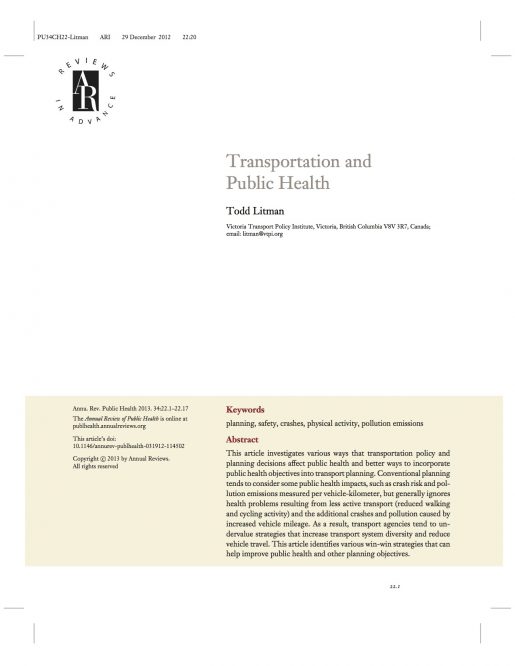
Authors
Publication Date
December 29, 2012
Tags
Resource Type
Transportation and Public Health
This article investigates various ways that transportation policy and planning decisions affect public health and better ways to incorporate public health objectives into transport planning. Conventional planning tends to consider some public health impacts, such as crash risk and pollution emissions measured per vehicle-kilometer, but generally ignores health problems resulting from less active transport (reduced walking and cycling activity) and the additional crashes and pollution caused by increased vehicle mileage. As a result, transport agencies tend to undervalue strategies that increase transport system diversity and reduce vehicle travel. This article identifies various win-win strategies that can help improve public health and other planning objectives.